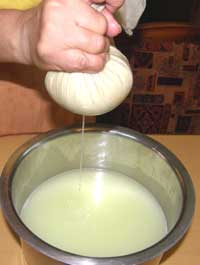Pujo is almost here, and in celebration the Gourmet Glutton is going full-on Bengali, with an array of articles based on Bengali cuisine. We have already explored the bitter and sour sides of our cuisine back in April, and this time we will tackle the sweets.
The articles in this series are in direct contrast to the more laid-back, rambling write-ups like the breakfast write-up from last week and some more which are to follow. The articles here are shorter and a lot more to the point. For those who like the longer articles, I hope you’ll pardon my brevity here, and there is a lot more of those articles to come very soon. Meanwhile, here’s Part 1…
No meal is complete without dessert, and we Bengalis love our sweets. Bengali sweets are not just limited to the end of a meal and are consumed with relish anytime and anywhere. Any discussion on Bengali sweets is bound to be incomplete, but this four-part series is my best shot at encompassing the variety of sweet treats that Bengal has to offer.

Like most Indian sweets, Bengali sweets are usually milk based, and some of the simplest sweets rely on reducing and flavouring the milk. Take full-fat milk in a heavy bottomed pan and allow it to reduce. Occasionally, scrape the cream off the top to the sides. Add sugar and flavourings like saffron and cardamom. After the milk has reduced to a thick consistency, the now dried cream is scraped off the sides and into the pan and voila, you’ve got rabdi.
The cream, malai or “shawr” retrieved from full-fat milk forms the basis for two iconic Bengali sweets, the speciality of Adhar Chandra Das and Sons of Krishnanagar in the Nadia district of West Bengal. Mr. Indrajit Lahiri aka Foodka who pens the iconic food blog Mohamuskil explains “Sarpuria uses a mashed sar (‘bata’ in Bengali) and Sarbhaja uses ghee fried pieces of sar as layer with kheer”. Versions or sorbhaja elsewhere in Kolkata tend to mix the sar with other ingredients like flour and khoya and frying it.

If you keep cooking the milk, sugar and cardamom mixture, it will eventually reduce down to kheer, sweet and caramelised, perfect as a stuffing for other sweets, as we’ll see later. Reduced milk forms the basis for the soft and grainy kalakand, which is an import from North India but pretty popular in Bengal nonetheless. As a detour from the rabri making process, you could add gobindobhog rice to the reducing milk and produce payesh.
Payesh or Bengali rice pudding attains its luscious texture not only from reducing the milk but also thanks to the starch released from the rice. Alternatively, you could make a caramel and when it reaches an amber hue, the milk is added to it and stirred vigorously. This is then set into a yoghurt to make mishti doi, with a rich, caramelly complexity and gorgeous reddish-brown hue. We’ve talked about payesh and mishti doi in some detail in our bhog article.

On the other hand, if you curdle the milk with lime juice or vinegar and and drain out the whey, you’re left with cottage cheese or chhana, the basis for a huge number of Bengali sweets. It is necessary to drain out as much whey as possible and then mash the chhana with the heel of the hand until it is completely smooth. This step is labour intensive and time consuming but is absolutely crucial to get right, or the sweets will have an unpleasant lumpy texture. And in Bengal where there’s chhana, there’s sandesh and rosogolla.
Next time, we’ll pick up where we left off and explore two of the most popular Bengali derivatives of humble chhana, both of which are springboards for hundreds of amazing derivatives. In Part 2, we will explore the dynamic duo of Bengali sweets.

3 Comments Add yours